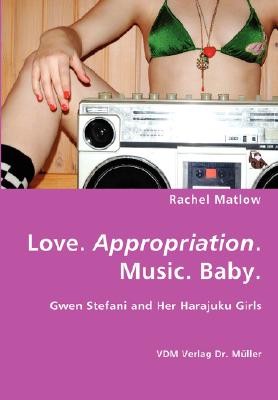
- We will send in 10–14 business days.
- Author: Rachel Matlow
- Publisher: VDM Verlag Dr. Mueller E.K.
- Year: 2007
- Pages: 96
- ISBN-10: 3836434776
- ISBN-13: 9783836434775
- Format: 17 x 24.4 x 0.5 cm, softcover
- Language: English
- SAVE -10% with code: EXTRA
Reviews
Description
With the release of her debut solo album, 2004's Love. Angel. Music. Baby., No-Doubt front-woman Gwen Stefani turned to the street fashions of Tokyo's Harajuku district for her inspiration. The platinum-blonde Stefani promoted herself by being constantly surrounded with an entourage of four voiceless Asian women, dubbed her "Harajuku Girls". They were on her CD cover, she dedicated a track to them, they performed in her videos, and they danced on her Harajuku Lovers live tour. Stefani even re-named them, "Love", "Angel", "Music", and "Baby" after her new record and clothing line, L.A.M.B.. This study examines how the Harajuku Girls function as Stefani's human accessories - silent, sexed-up, submissive, school-girl muses sent to save her from her dull whiteness. I introduce Stefani as an intertextual celebrity who appropriates, absorbs and cross-references cultural texts and ethnicities in order to market and brand herself as a distinct entity in the worlds of music and fashion. This book questions: - How has Stefani appropriated Harajuku culture in ways that reinforce Orientalist ideas of Asian women? - How has Stefani used Harajuku culture in order to reinforce her whiteness and distinguish herself as a distinct celebrity brand? - How we may compare the transcultural differences between Harajuku appropriation of American culture and Stefani's appropriation of it? - What are the political and cultural implications of Stefani's ethnic signifiers? The book is directed towards academic scholars in Communications, media professionals, and popular culture enthusiasts alike.
EXTRA 10 % discount with code: EXTRA
The promotion ends in 19d.17:13:56
The discount code is valid when purchasing from 10 €. Discounts do not stack.
- Author: Rachel Matlow
- Publisher: VDM Verlag Dr. Mueller E.K.
- Year: 2007
- Pages: 96
- ISBN-10: 3836434776
- ISBN-13: 9783836434775
- Format: 17 x 24.4 x 0.5 cm, softcover
- Language: English English
With the release of her debut solo album, 2004's Love. Angel. Music. Baby., No-Doubt front-woman Gwen Stefani turned to the street fashions of Tokyo's Harajuku district for her inspiration. The platinum-blonde Stefani promoted herself by being constantly surrounded with an entourage of four voiceless Asian women, dubbed her "Harajuku Girls". They were on her CD cover, she dedicated a track to them, they performed in her videos, and they danced on her Harajuku Lovers live tour. Stefani even re-named them, "Love", "Angel", "Music", and "Baby" after her new record and clothing line, L.A.M.B.. This study examines how the Harajuku Girls function as Stefani's human accessories - silent, sexed-up, submissive, school-girl muses sent to save her from her dull whiteness. I introduce Stefani as an intertextual celebrity who appropriates, absorbs and cross-references cultural texts and ethnicities in order to market and brand herself as a distinct entity in the worlds of music and fashion. This book questions: - How has Stefani appropriated Harajuku culture in ways that reinforce Orientalist ideas of Asian women? - How has Stefani used Harajuku culture in order to reinforce her whiteness and distinguish herself as a distinct celebrity brand? - How we may compare the transcultural differences between Harajuku appropriation of American culture and Stefani's appropriation of it? - What are the political and cultural implications of Stefani's ethnic signifiers? The book is directed towards academic scholars in Communications, media professionals, and popular culture enthusiasts alike.


Reviews